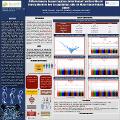A Whole-Genome Sequencing Association Study of Low Bone Mineral Density Identifies New Susceptibility Loci in the Phase I Qatar Biobank Cohort
Abstract
Introduction: Bone density disorders are characterized by a reduction in bone mass density and strength, which lead to an increase in the susceptibility to sudden and unexpected fractures. Despite the serious consequences of low bone mineral density (BMD) and its significant impact on human health, most affected individuals may not know that they have the disease because it is asymptomatic. Therefore, understanding the genetic basis of low BMD and osteoporosis is essential to fully elucidate its pathobiology and devise preventative or therapeutic approaches. Materials and Methods: we sequenced the whole genomes of 3000 individuals from the Qatar Biobank and conducted genome-wide association analyses to identify genetic risk factors associated with low BMD in the Qatari population. Results: Fifteen variants were significantly associated with total body BMD (p < 5 × 10-8). Of these, five variants had previously been reported by and were directionally consistent with previous genome-wide association study data. Ten variants were new: six intronic variants located at six gene loci (MALAT1/TALAM1, FASLG, LSAMP, SAG, FAM189A2, and LOC101928063) and four intergenic variants. Conclusion: This first such study in Qatar provides a new insight into the genetic architecture of low BMD in the Qatari population. Nevertheless, more studies are needed to validate these findings and to elucidate the functional effects of these variants on low BMD and bone fracture susceptibility.
DOI/handle
http://hdl.handle.net/10576/24400Collections
- Biomedical Sciences [844 items ]
- Theme 2: Health and Biomedical Sciences [80 items ]


